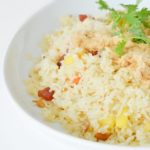For many of us, the bacteria that come from a small group in the genus, Proteus would mean nothing. However, this group of bacteria are implicated in some unpleasant food poisoning cases.
The genus is made up of five species and 3 unamed genomespecies according to some classification work at the beginning of the 21st Century (O’Hara et al., 2000). They are all Gram-negative bacteria with peritrichous flagella.
A key and typical bacteria in the group is P. mirabilis which is found in a range of environments and is normally considered a typical member of our gut microflora and fauna of the human gastrointestinal tract.
If the stomach is upset, the bacterium P. mirabilis becomes an opportunistic pathogen where it causes urinary tract infections (UTIs) and other types of nosocomial infections (Chen et al., 2012; Jacobsen & Shirtliff, 2011).
The bacteria is found in a number of food animals such as poultry especially chickens (Lei et al., 2014; 2016). There are now multiple resistant forms of this bacteria which indicates it may become a major food issue in the future (Li et al., 2016).
References
Chen, C. Y., Chen, Y. H., Lu, P. L., Lin, W. R., Chen, T. C., & Lin, C. Y. (2012). Proteus mirabilis urinary tract infection and bacteremia: Risk factors, clinical presentation, and outcomes. Journal of Microbiology, Immunology and Infection, 45:228–236. https://doi.org/10.1016/j.jmii.2011.11.007
Jacobsen, S. M., & Shirtliff, M. E. (2011). Proteus mirabilis biofilms and catheter-associated urinary tract infections. Virulence, 2, 460–465. https://doi.org/10.4161/viru.2.5.17783
Lei, C. W., Zhang, A. Y., Liu, B. H., Wang, H. N., Guan, Z. B., Xu, C. W., … Zhang, D. D. (2014). Molecular characteristics of Salmonella genomic island 1 in Proteus mirabilis isolates from poultry farms in China. Antimicrobial Agents and Chemotherapy, 58, 7570–7572. https://doi.org/10.1128/AAC.03992-14
Lei, C. W., Zhang, A. Y., Wang, H. N., Liu, B. H., Yang, L. Q., & Yang, Y. Q. (2016). Characterization of SXT/R391 integrative and conjugative elements in Proteus mirabilis isolates from food-producing animals in China. Antimicrobial Agents and Chemotherapy, 60, 1935–1938. https://doi.org/10.1128/AAC.02852-15
Li, X., Du, Y., Du, P., Dai, H., Fang, Y., Li, Z., … Wang, D. (2016). SXT/R391 integrative and conjugative elements in Proteus species reveal abundant genetic diversity and multidrug resistance. Scientific Reports, 6, 37372. https://doi.org/10.1038/srep37372
O’Hara, C. M., Brenner, F. W., & Miller, J. M. (2000). Classification, identification, and clinical significance of Proteus, Providencia, and Morganella. Journal of Clinical Microbiology, 13, pp. 534–546.


Leave a Reply